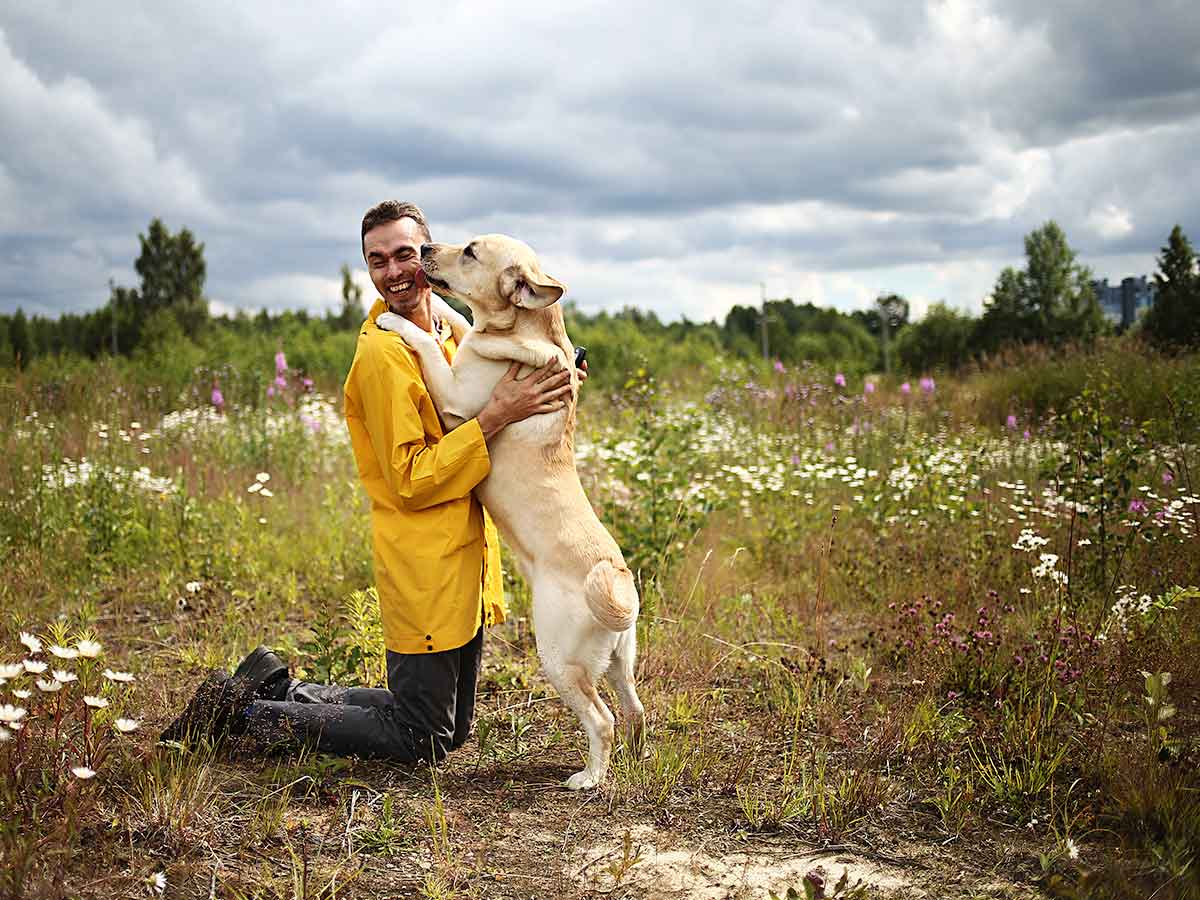Fall is on the horizon! Dogs and their owners can look forward to cooler weather and fall fun. But that doesn’t mean pet care is taking a holiday! Keep in mind these important pet care practices as autumn approaches.
Fleas and ticks: Fall temperatures don’t mean the end of fleas. They can thrive on warm fall days. Also, fleas lay eggs during the hot summer months, and immature fleas begin to emerge as more moderate fall temperatures arrive.4
Although tick nymphs (those in the life cycle stage just prior to full adulthood) peak in the spring months, the number of adult deer ticks is higher in the fall than it is during any other part of the year.1 Deer ticks are carriers of the bacteria that causes Lyme disease, and they feed on many species, including dogs, cats, and people. So, as always, it’s important to keep treating your pets year-round with a flea and tick preventative to keep them safe.
And although you probably need to mow your grass less frequently as fall approaches, be sure to keep up the maintenance. Ticks prefer to live in long grass, so giving your lawn a good manicure can help keep your tick problem under control.1
Temperature: Fall is a tough time for pet care because the temperature is so variable. Depending on where you live, you may need to worry about anything from heatstroke to frostbite. In particular, you’ll always want to make certain that your dog or cat has enough water. Just because the weather has gotten cooler doesn’t mean that your pet doesn’t need access to adequate amounts of fresh water.
Halloween: Halloween can be a fun time for both you and your pets, but you’ll also want to plan ahead and take some safety precautions. Chocolate, which is found so plentifully at Halloween, can be extremely toxic for both dogs and cats.2 Also, candies containing xylitol are among the harmful foods you should keep away from your pet.2
On the other hand, pumpkin, one of the most popular fall favorites, is a great source of vitamins A and C, potassium, and fiber to help a dog’s and cat’s skin, fur, and eyes.3 Make sure you’re feeding it in the appropriate form, though. Pure pumpkin puree is healthy for your pet. Pumpkin bars with cream cheese frosting or the remains of your jack-o-lantern? That’s a “no.”
Many of us love dressing up for Halloween and like to get our pets in on the fun. Pet Halloween costumes can be cute, but you’ll want to be certain that they don’t have small parts that pose a choking hazard or impair your pets’ breathing or hearing.2 Take your pet’s personality into account, too. A laid-back dog or a chill kitty might love (or at least tolerate) a costume, but some pets just aren’t into it. Learn how to read and respect your pets’ body language to determine if they’re ok with a costume.
Grooming: Finally, fall is a good time to remember that keeping your pet’s coat in good shape isn’t just a matter of vanity – it’s also a matter of health. Take advantage of the cooler fall weather by spending some quality time outside with your dog and a good-quality pet brush.
Some good dog grooming tips include regularly brushing your pet to avoid matting and always making certain your pet is completely dry after a bath. These and other tips can help your pet avoid “hot spots” and other skin irritations that can contribute to poor health.
References:
1. Lyme Disease. Centers for Disease Control and Prevention. https://www.cdc.gov/lyme/transmission/index.html
2. Halloween pet safety. American Veterinary Medical Association. https://www.humanesociety.org/resources/halloween-safety-tips-pets
3. Ememe, M.U., Ememe, C. Benefits of Super Food and Functional Food for Companion Animals. 10.5772/65946
4. Veterinarian says don’t flee from flea and tick prevention now that fall is here. Kansas State University. https://www.k-state.edu/media/newsreleases/2021-09/fall-flea-and-ticks92921.html
Want to share this article?
More like this
Lost dog? Your pet’s personality may provide clues
Shy? Social? If your dog ever gets lost, understanding his personality traits can help you determine where to look.
Emergency planning? Include your pets, too
Make sure pets have a place in your household’s emergency preparation and planning.
How to be a PetRescuer
Find out how you can make a difference by helping to reunite lost pets with their owners.





 Austria
Austria Belgium
Belgium Czech Republic
Czech Republic Denmark
Denmark Europe
Europe Finland
Finland France
France Germany
Germany Greece
Greece Hungary
Hungary Ireland
Ireland Israel
Israel Italy
Italy Netherlands
Netherlands Norway
Norway Poland
Poland Portugal
Portugal Romania
Romania Spain
Spain Sweden
Sweden Turkey
Turkey United Kingdom
United Kingdom United States
United States